Kanchanaburi
Because of its magnificent landscape and charming beauty, Kanchanaburi has become a major tourist destination, with attractions including several well-known waterfalls, caves that were once inhabited by Neolithic man, pristine national parks, tranquil rivers, virgin forests, and several large reservoirs. The original town of Kanchanaburi was established by King Rama I as a first line of defense against the Burmese, whom he believed might use the old invasion route through the Three Pagodas Pass at the Siam-Myanmar border.
Many tourists come here just for a couple days but stay for weeks in order to explore all of the attractions in the surrounding countryside. Along with visiting spectacular waterfalls, lush forests, and three of Thailand’s largest reservoirs, white water rafting, elephant trekking, and golfing are popular activities for visitors. Kanchanaburi is an excellent tourist destination for nature lovers.
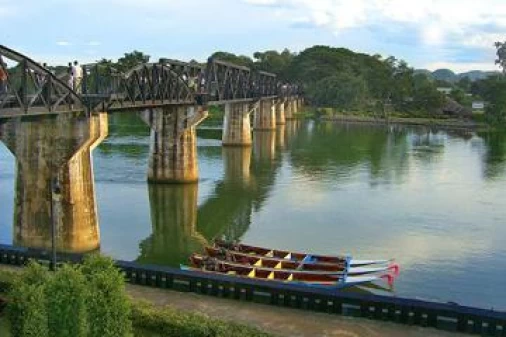
Bridge Over the River Kwai (Kanchanaburi)
Kanchanaburi, in Myanmar border, is home to the famous Bridge River Kwai. During WW II, Japan constructed...
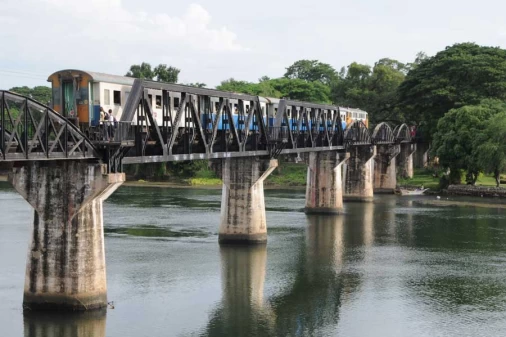
Death Railway Bridge
Descriptions: This 300m-long bridge is heavy with the history of the Thailand–Burma Railway, the construction...
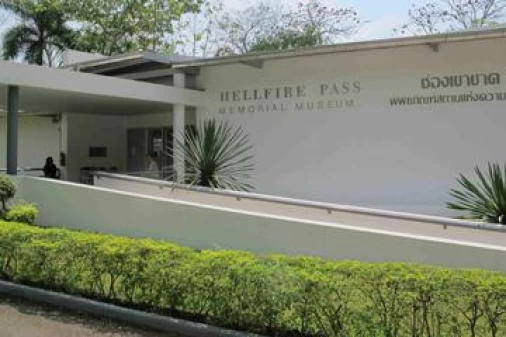
Hellfire Pass Museum (Kanchanaburi)
This Australian built complex consists of a memorial site located within Konyu Cutting (Hellfire Pass),...
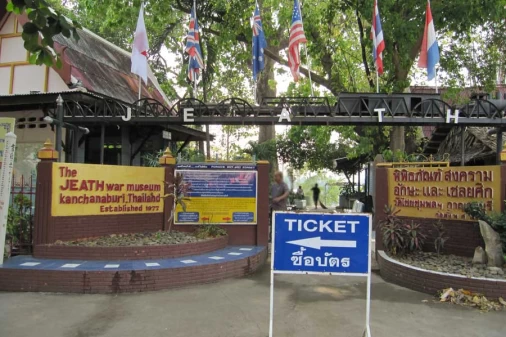
JEATH War Museum
Descriptions: Pieced together in 1977 by the abbot of Wat Chaichumpon, the JEATH War Museum was among...
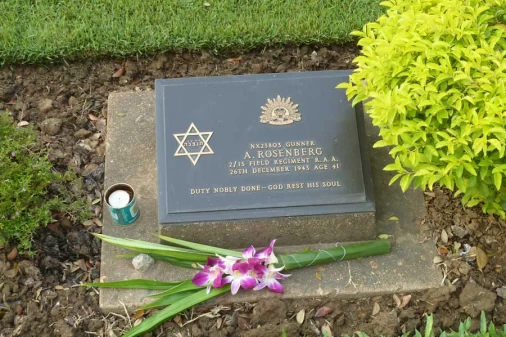
Kanchanaburi War Cemetery
Descriptions: The town of Kanchanaburi is 129 kilometres North-West of Bangkok and is best reached by...
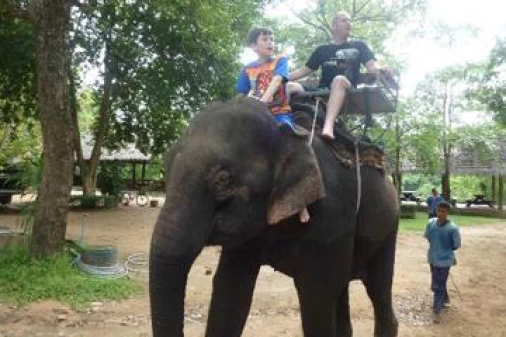
Taweechai Elephant Camp (Kanchanaburi)
Taweechai Elephant Camp is one of the largest elephant camps in Thailand. In operations since 1999,...
Frequently asked questions
Just 2 hours away from Bangkok, Kanchanaburi holds a treasure trove of nature and history that will enchant you. Even better, there are many untouched attractions in Kanchanaburi that you’ll be glad to discover before most everyone else. To give you some ideas of what to expect, here are some of the best things to do in Kanchanaburi, Thailand.
1/ Bridge on the River Kwai (Death Railway Bridge)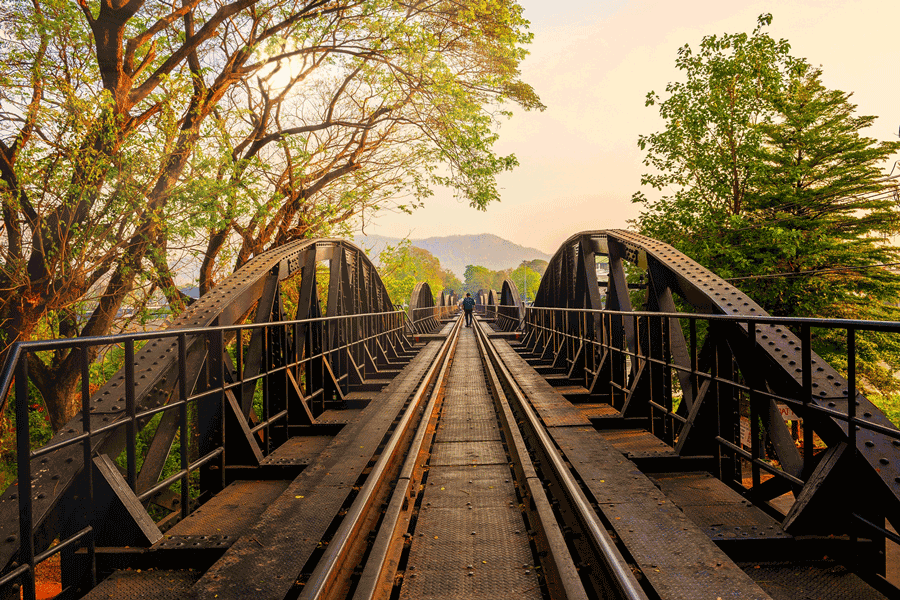 Called the “Bridge on the River Kwai” because of the famous movie of the same name, the Death Railway Bridge is the best-known historical landmark in Kanchanaburi. It was erected through the forced labor of British, Dutch, and American prisoners of war during WWII. The bridge was part of the Thai-Burmese “Death Railway,” so named because of the scores of men who died during its construction.
Called the “Bridge on the River Kwai” because of the famous movie of the same name, the Death Railway Bridge is the best-known historical landmark in Kanchanaburi. It was erected through the forced labor of British, Dutch, and American prisoners of war during WWII. The bridge was part of the Thai-Burmese “Death Railway,” so named because of the scores of men who died during its construction.
Japanese forces oversaw the project, as the railway would have helped bring supplies to their troops who were fighting the British in neighboring Burma. Today, you can walk or ride a train across this bridge, sections of which are from the original structure. Market stalls surround the area selling food and souvenirs.
2/ Thailand Burma Railway Centre & Kanchanaburi War Cemetery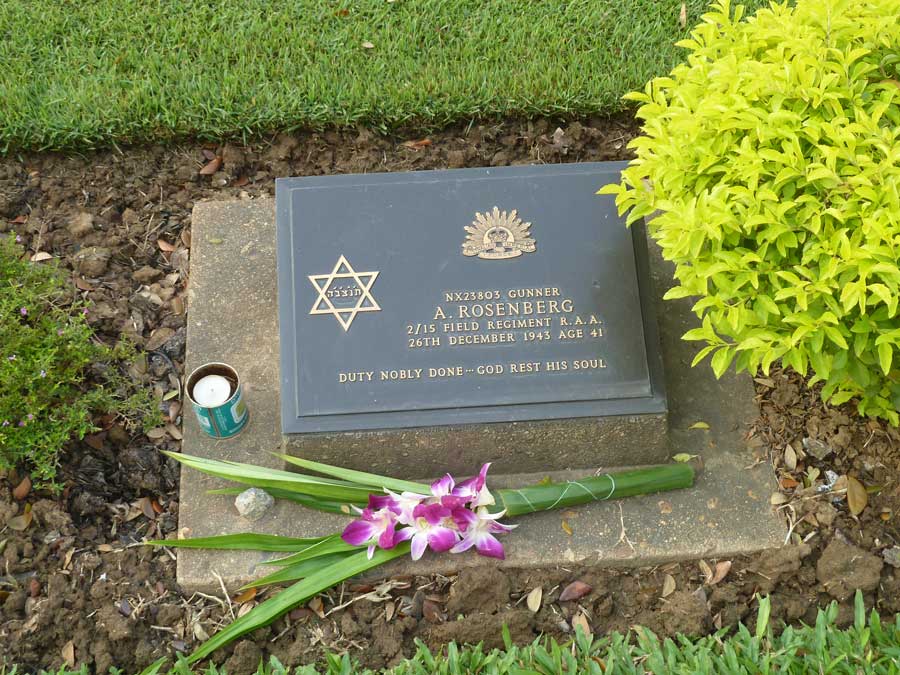 The well-curated exhibits of the Thailand-Burma Railway Centre provide an excellent overview of the railway’s history and the brutal conditions suffered by the POWs and forced labourers who built it. Poignant personal accounts, photographs, artifacts, and videos illuminate this dark slice of history, from the Japanese invasion to the lives of some of the survivors after the war.
The well-curated exhibits of the Thailand-Burma Railway Centre provide an excellent overview of the railway’s history and the brutal conditions suffered by the POWs and forced labourers who built it. Poignant personal accounts, photographs, artifacts, and videos illuminate this dark slice of history, from the Japanese invasion to the lives of some of the survivors after the war.
After absorbing all the museum exhibits, take a short stroll through the well-maintained Kanchanaburi War Cemetery across the street. Also known as Don-Rak War Cemetery, this is the final resting place of nearly 7,000 British, Dutch, and Australian prisoners who died during construction of the Death Railway. Walking past the graves and reading the inscriptions can be an emotional experience, especially when you realize how young some of the prisoners were. Even more sobering is the fact that these graves represent only a small number of the prisoners who died toiling under unimaginably harsh conditions to construct the railway.
3/ Hellfire Pass & Memorial Memorable Museum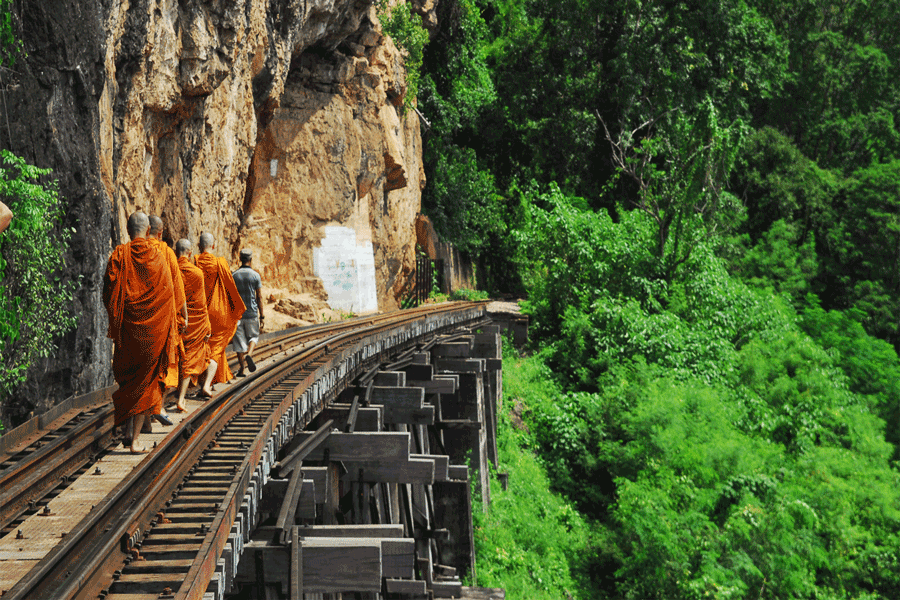 The Hellfire Pass is a 500-meter-long portion of rock that 1,000 prisoners of war dug out (by hand) to pave the way for the Death Railway. Seven hundred of those men died during the 12-week digging period. Today, it’s possible to walk the old railway track into the jungle (which takes about four to five hours), and visit a memorial museum honoring those who died. Established by the Australian government to honor Allied POWS, the museum tells the poignant stories of these men through artifacts, tools, photos, and multimedia displays. The audio headsets are highly recommended.
The Hellfire Pass is a 500-meter-long portion of rock that 1,000 prisoners of war dug out (by hand) to pave the way for the Death Railway. Seven hundred of those men died during the 12-week digging period. Today, it’s possible to walk the old railway track into the jungle (which takes about four to five hours), and visit a memorial museum honoring those who died. Established by the Australian government to honor Allied POWS, the museum tells the poignant stories of these men through artifacts, tools, photos, and multimedia displays. The audio headsets are highly recommended.
4/ Erawan National Park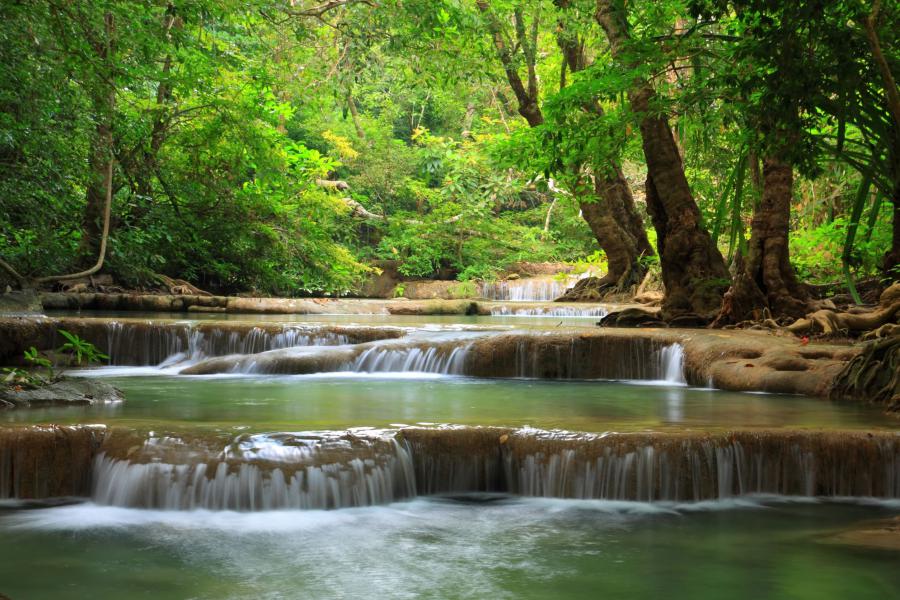 Jungly Erawan National Park offers a soothing counterpoint to some of Kanchanaburi’s emotionally charged historical attractions, and the picturesque seven-tiered Erawan Falls are the star attraction. The water cascades down the mountains in a serene setting, surrounded by lush vegetation and limestone mountains. A scenic hiking trail leads up to the top of the falls (look out for thieving monkeys along the way), and the turquoise pools are a lovely spot to take a refreshing swim on a hot day. Dip your feet in the water, and you might feel fish gently nibbling at your toes.
Jungly Erawan National Park offers a soothing counterpoint to some of Kanchanaburi’s emotionally charged historical attractions, and the picturesque seven-tiered Erawan Falls are the star attraction. The water cascades down the mountains in a serene setting, surrounded by lush vegetation and limestone mountains. A scenic hiking trail leads up to the top of the falls (look out for thieving monkeys along the way), and the turquoise pools are a lovely spot to take a refreshing swim on a hot day. Dip your feet in the water, and you might feel fish gently nibbling at your toes.
5/ Elephants world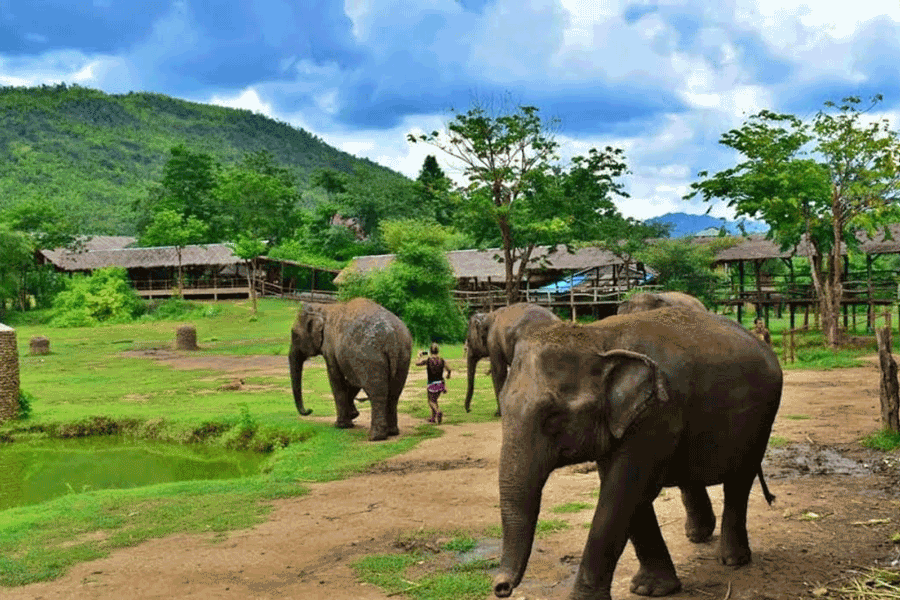 Most people come to Thailand with the hopes of having a divine experience with an elephant, Thailand’s most revered creature. Elephant’s World provides visitors an opportunity to do that in an ethical way. The elephants here are rescues that have suffered from years of labor and abuse. Rather than riding elephants or watching them perform shows, you spend the day in the service of the animals – preparing food for them and bathing them in the river. It’s a way to care for abused elephants and volunteer in a meaningful way.
Most people come to Thailand with the hopes of having a divine experience with an elephant, Thailand’s most revered creature. Elephant’s World provides visitors an opportunity to do that in an ethical way. The elephants here are rescues that have suffered from years of labor and abuse. Rather than riding elephants or watching them perform shows, you spend the day in the service of the animals – preparing food for them and bathing them in the river. It’s a way to care for abused elephants and volunteer in a meaningful way.
6/ Chungkai Cemetery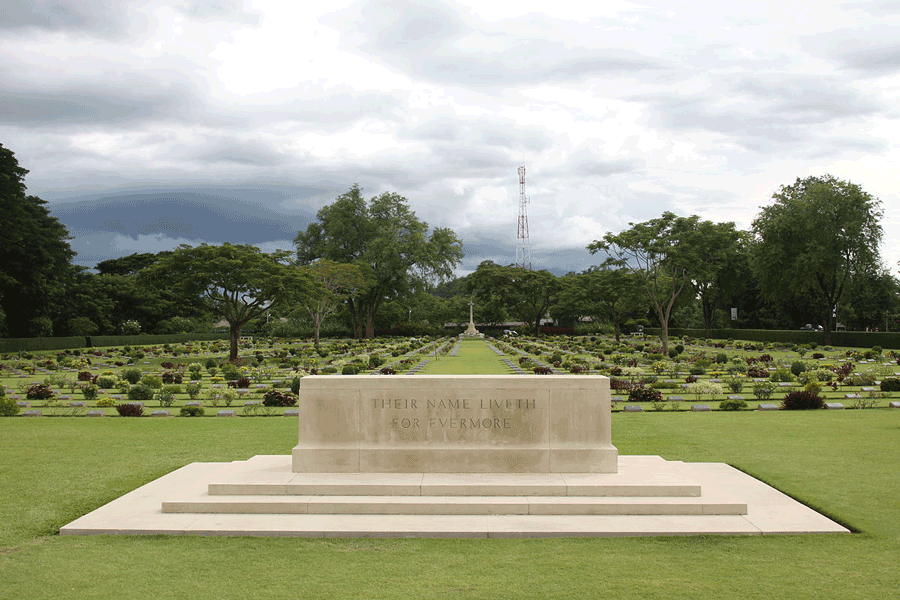 Also called Chonk-Kai Cemetery, this now peaceful area on the banks of the Kwai Noi River is home to the graves of more than 1,700 POWs (1,400 Commonwealth and 300 Dutch casualties), and was also the site of a former POW camp. The ground where these prisoners are buried is the same place they founded a church and cemetery during their years of internment. Many of those laid to rest died at the nearby hospital. Like the Kanchanaburi War Cemetery, this one is also beautifully landscaped. It lies about two kilometers south of the city and is easy to reach from town by bike.
Also called Chonk-Kai Cemetery, this now peaceful area on the banks of the Kwai Noi River is home to the graves of more than 1,700 POWs (1,400 Commonwealth and 300 Dutch casualties), and was also the site of a former POW camp. The ground where these prisoners are buried is the same place they founded a church and cemetery during their years of internment. Many of those laid to rest died at the nearby hospital. Like the Kanchanaburi War Cemetery, this one is also beautifully landscaped. It lies about two kilometers south of the city and is easy to reach from town by bike.
7/ Prasat Muang Singh National Park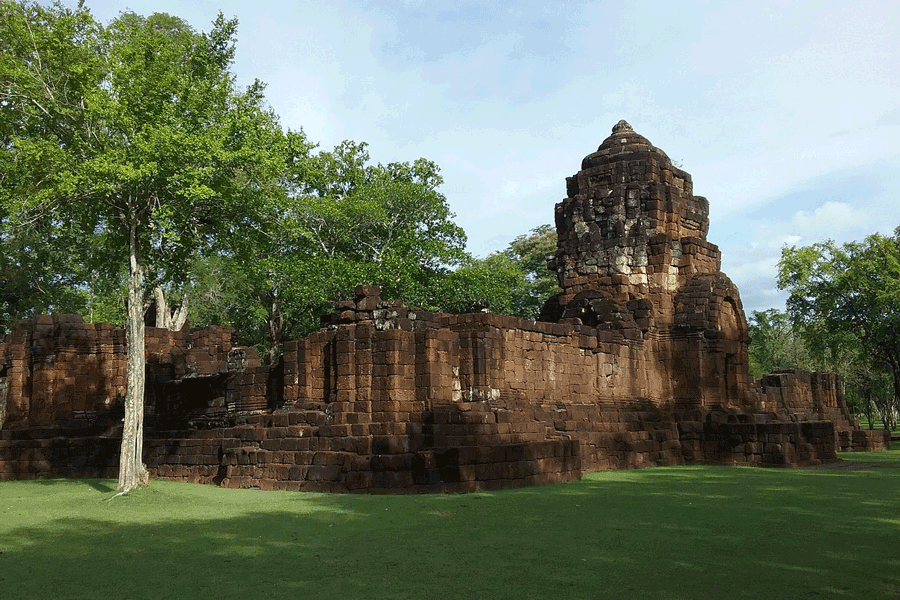 It’s worthwhile stopping by this historical park with its ancient ruins, once an outpost built by the Khmers. Despite its original purpose, there’s something almost magical about standing in the presence of such an old and elegant structure. Here, you’ll find a preserved shrine, tower gates, and ancient inscriptions in the courtyard. It’s thought to be one of the satellite cities of Angkor, the capital of the Khmer empire. At the museum on the premises, you can view artifacts and relics discovered at the site.
It’s worthwhile stopping by this historical park with its ancient ruins, once an outpost built by the Khmers. Despite its original purpose, there’s something almost magical about standing in the presence of such an old and elegant structure. Here, you’ll find a preserved shrine, tower gates, and ancient inscriptions in the courtyard. It’s thought to be one of the satellite cities of Angkor, the capital of the Khmer empire. At the museum on the premises, you can view artifacts and relics discovered at the site.
Travelers visit Kanchanaburi might ask for how many day should you visit the place. With many historical sites and beautiful landscapes, we would like to suggest you the most suitable itinerary of 2 days for your most enjoyable experience.
Day 1: Bridge over River Kwai, Hellfire Pass – Mon Village, Elephant Camp
 AM: You will visit the Bridge over River Kwai, famous for 2 reasons, a movie in 1957 inspired by the war history of the bridge and its connection to the Death Railway. Second, despite its bloody past, it’s a picturesque location great for photos. We headed to Hellfire Pass Memorial to learn more about Kanchanaburi’s history and boy did it give us a more thorough and moving understanding of what happened years ago.
AM: You will visit the Bridge over River Kwai, famous for 2 reasons, a movie in 1957 inspired by the war history of the bridge and its connection to the Death Railway. Second, despite its bloody past, it’s a picturesque location great for photos. We headed to Hellfire Pass Memorial to learn more about Kanchanaburi’s history and boy did it give us a more thorough and moving understanding of what happened years ago.
PM: We getting on the boat and heading to Phutakien Pier, make sure to head out for a short trek to the Mon Village and Elephant Camp. Connected to River Kwai Jungle Rafts via a bridge, there are signs and maps along the way directing you to different places.
Day 2: Erawan Falls, Mallika Village, Pak Prak Walking Street
 AM: It has 7 tiers of waterfalls with different shapes and beauty of its own. The first two tiers are easy to get to. Once you’re at the 2nd tier, we guarantee you would already want to plunge into cool aqua pool. This tier is nicknamed “Fish Palace”. You’ll see a school of huge fish in the water. We definitely regret not experiencing a swim here. (If you don’t want to get wet, grab some food for a picnic and enjoy the cool breeze and mist from the water and forest.)
AM: It has 7 tiers of waterfalls with different shapes and beauty of its own. The first two tiers are easy to get to. Once you’re at the 2nd tier, we guarantee you would already want to plunge into cool aqua pool. This tier is nicknamed “Fish Palace”. You’ll see a school of huge fish in the water. We definitely regret not experiencing a swim here. (If you don’t want to get wet, grab some food for a picnic and enjoy the cool breeze and mist from the water and forest.)
PM: Stepping into the huge gate of Mallika Village, was like travelling through a time portal to the past.
This ancient village has been painstakingly preserved, from the layout of the village, to shopping in its original ancient coin, Satang. Then, visit the historic Pak Prak Road is lined with rows of Chino Portuguese buildings built during WWII and the Pak Prak community has embraced its past and turned it into a Heritage Walking Street.
1/ On’s Thai Issan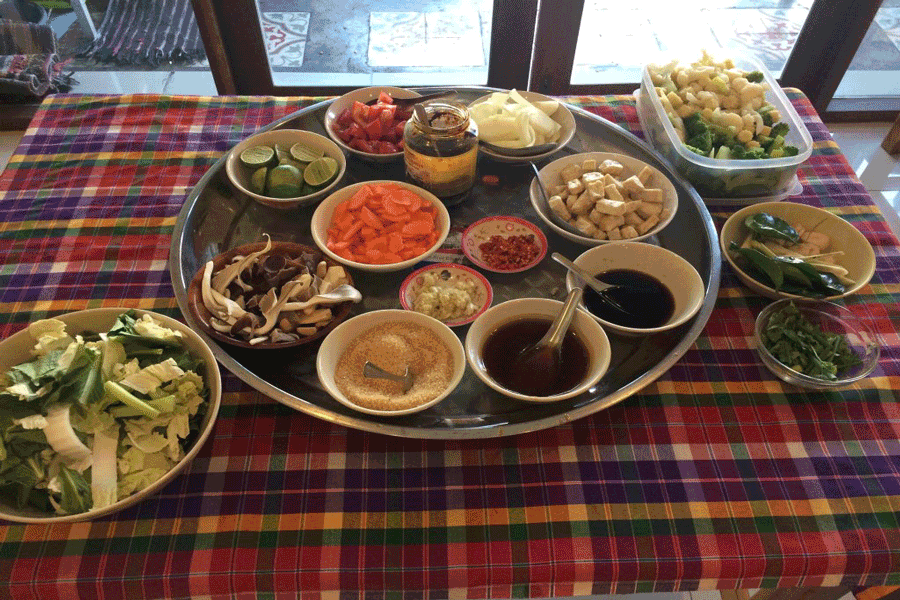 Address: 36 Maenam Kwai Road Tamakham, Kanchanaburi, Thailand
Address: 36 Maenam Kwai Road Tamakham, Kanchanaburi, Thailand
The restaurant is a local restaurant serve Thai food, especially the stir fry veg and cashew nuts and the Morning Glory dishes. They do not sell alcoholic drinks, but they are happy if you want to bring your own beer. It does fill up and service will slow accordingly. Friendly waitress and large floor fans make a hot night bearable.
2/ Mae Nam Khwae Road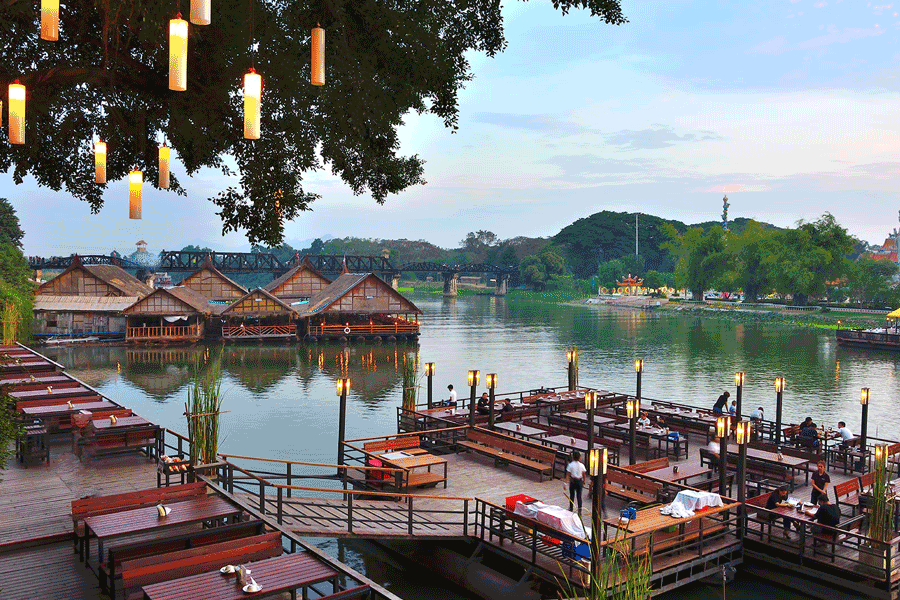 Many travellers take all of their meals on Mae Nam Khwae Road, and for good reason. The pad chaa pla khang, sizzling local fish with fresh peppercorns, chillies and ginger, was one of the best guesthouse meals. The long menu also includes whole sea bass or snapper prepared a number of ways for 150 baht, a good deal. Normal dishes like fried rice and green curry start at just 40 baht and the open-sided dining area is a fine place to hang while playing cards and downing a few beers.
Many travellers take all of their meals on Mae Nam Khwae Road, and for good reason. The pad chaa pla khang, sizzling local fish with fresh peppercorns, chillies and ginger, was one of the best guesthouse meals. The long menu also includes whole sea bass or snapper prepared a number of ways for 150 baht, a good deal. Normal dishes like fried rice and green curry start at just 40 baht and the open-sided dining area is a fine place to hang while playing cards and downing a few beers.
3/ Kan Buri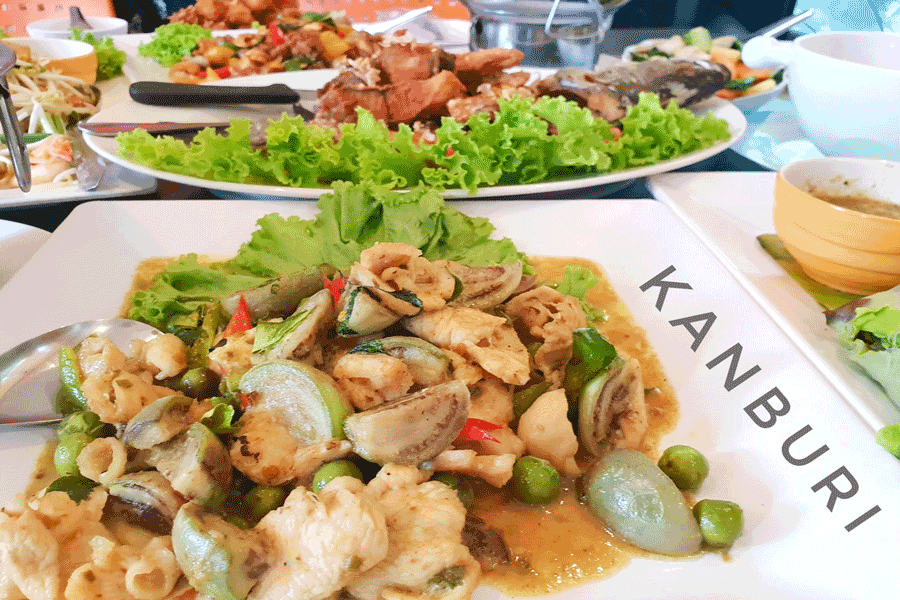 Address: 339/1 Mae Nam Kwae Road Thamakam, Kanchanaburi 71000 Thailand
Address: 339/1 Mae Nam Kwae Road Thamakam, Kanchanaburi 71000 Thailand
This is the restaurants compact area. Was simply furnished with comfortable shady branches. Is about 800 meters away from the famous bridge of the river kwai. The foods such as steaks.pasta.pizza and also Thai spicy cousins. Get ready to party meetings in a personal environment.
Kanchanaburi has a tropical climate with three distinct seasons. The weather is hot and humid all year round. Warm Season (February – May): Summers are very hot with an average temperature of 38 degree Celsius. This is basically off-season in Kanchanaburi.
Warm Season (February – May): Summers are very hot with an average temperature of 38 degree Celsius. This is basically off-season in Kanchanaburi.
Rainy Season (June – October): Monsoons experience heavy rains with cool days and warm nights which make this time of the year as low season for tourists.
Cold Season (November – January): The weather in the cold season can be dry and warm with an average of 25 degree Celsius. This is the peak season for tourists in Kanchanaburi.
So, the best time to visit Kanchanaburi is year around but peak months are from November through February when the temperatures are cooler.
By train: Take Thonburi- Nam Tok Train route. There are two trains a day that run from Thonburi station in Bangkok to Namtok, stopping at both Kanchanaburi and River Kwai Bridge stations. Thonburi – Namtok trains are available in 3rd class train only (no air-con). It takes about 3 hours from Bangkok to Kanchanaburi by train. The train cost is around US$ 5 per ticket.
 By bus: Getting from Bangkok to Kanchanaburi by bus shouldn’t be that difficult. That is if you’re prepared and know what you’re doing. The trip should take up to 3 hours with no traffic. Buses don’t have toilets and there are no stops along the way. The cost is around US$ 8 per ticket.
By bus: Getting from Bangkok to Kanchanaburi by bus shouldn’t be that difficult. That is if you’re prepared and know what you’re doing. The trip should take up to 3 hours with no traffic. Buses don’t have toilets and there are no stops along the way. The cost is around US$ 8 per ticket.
By car: Even though the city itself is famous for its historic railroad, the best way to get to this mountainous town is by road. The car ride will take traveler about 2 hours from the city of Bangkok, and extra half an hour for those from international airports. Comparing to the past, a road to Kanchanaburi is much better recently. The cost is around US$ 90 per car.
We wish that the article would be a part assistant of your plan to Kanchanaburi and you will find it as a hand out information for your trip. If you are looking for a local travel agency who is specialist in making the tour to the destination, please let us know. We are more than happy to make your trip to be once in life time.
 France
France  Spain
Spain  German
German  Italian
Italian 

 Vietnam Tours
Vietnam Tours  Cambodia Tours
Cambodia Tours  Myanmar tours
Myanmar tours  Thailand Tours
Thailand Tours  Laos Tours
Laos Tours